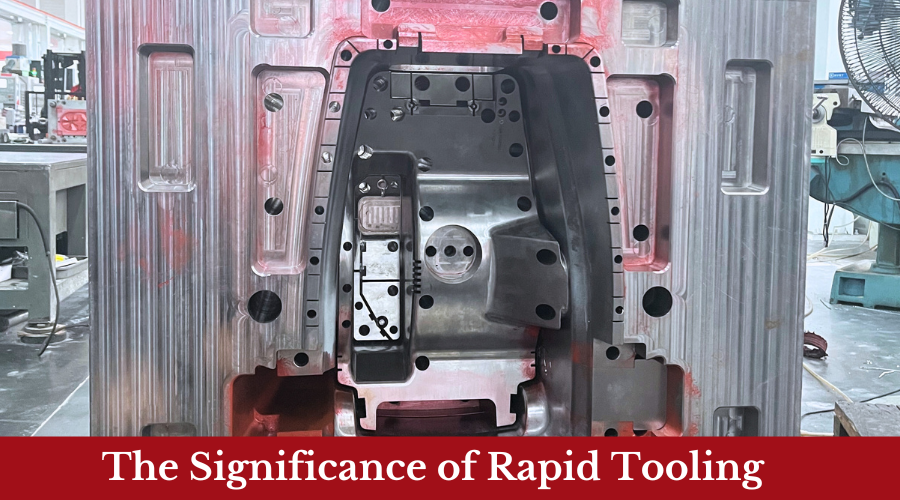In today’s fast-paced and competitive world, manufacturers are constantly seeking innovative ways to shorten product development cycles and reduce time-to-market. One such revolutionary advancement that has transformed manufacturing processes is rapid tooling. Rapid tooling refers to the use of advanced technologies and methodologies to create molds and tooling quickly and efficiently. This article explores the significance of rapid tooling and its profound impact on various industries.

1. Accelerating Product Development
Traditional tooling methods often involve time-consuming processes, such as designing, machining, and finishing, which can significantly delay product development cycles. Rapid tooling eliminates these bottlenecks by leveraging cutting-edge techniques such as additive manufacturing (3D printing), computer-aided design(CAD), and computer-aided manufacturing(CAM). By employing rapid tooling, manufacturers can quickly iterate designs, produce prototypes, and refine product specifications in a matter of days rather than weeks or months. This accelerated product development process enables companies to stay ahead in a highly competitive market.
2. Cost Reduction
Traditional tooling methods often requre substantial investments in expensive machinery, complex tool designs, and skilled labor. Rapid tooling offers a cost-effective alternative by utilizing additive manufacturing processes and advanced materials. By adopting rapid tooling, manufacturers can reduce tooling costs, minimize wastage of materials, and optimize production efficiency. Additionally, the ability to produce functional prototypes early in the development phase helps identify and rectify design flaws, avoiding costly errors in later stages.
3. Design Flexibility and Customization
Rapid tooling empowers designers and engineers with unparalleled flexibility in creating complex geometries and intricate designs. Conventional tooling methods are often limited by the constraints of subtractive manufacturing techniques, making it challenging to achieve intricate details or complex shapes. Rapid tooling, however, enables the productions of molds with intricate features, undercuts, and textured surfaces that were previously unachievable. This level of design freedom opens doors to novel product innovations and allows for greater customization to meet diverse customer demands.
4. Shorter Time-to-Market
In today’s dynamic market, being the first to introduce a new product can provide a significant competitive advantage. Rapid tooling expedites the product development cycle, enabling manufactures to swiftly respond to changing market trends and consumer demands. By reducing the time required to develop tooling and manufacture prototypes, companies can accelerate the production process and bring products to market faster. This agility allows businesses to seize opportunities, gain market share, and maintain a competitive edge.
5. Low-Volume Production
Rapid tooling is particularly beneficial for low-volume production runs. Traditional tooling methods are often cost-prohibitive for small batch sizes, as the expense associated with designing and producing molds can outweigh the benefits. Rapid tooling, on the other hand, offers a more economical solution for low-volume production by eliminating the need for expensive tooling setups. By leveraging digital manufacturing technologies, manufacturers can quickly and cost-effectively produce small batches, catering to niche markets or testing new product lines.
6. Improved Quality Control
Rapid tooling enhances quality control processes throughout the production cycle. By using rapid prototyping techniques, manufacturers can assess the functionality, fit, and form of a product before investing in full-scale production. This early validation helps identify design flaws and manufacturing issues, ensuring that products meet or exceed quality standards. Rapid tooling also allows for faster design iterations and adjustments based on real-world testing, resulting in higher-quality end products.
Conclusion
Rapid tooling has emerged as a trans-formative force within the manufacturing industry, reshaping traditional production processes and unlocking new possibilities for innovation. Its significance lies in accelerating product development, reducing costs, providing design flexibility, and shortening time-to-market. By embracing rapid tooling, manufacturers can achieve greater efficiency, stay ahead of the competition, and cater to evolving customer demands in today’s rapidly evolving market landscape. As this technology continues to advance, its influence will only grow, further revolutionizing the way we design, create, and bring product to market.
-q4gvl4k29y4hq8j9rjpapvj0ft06fje63olt7p210i.png)

